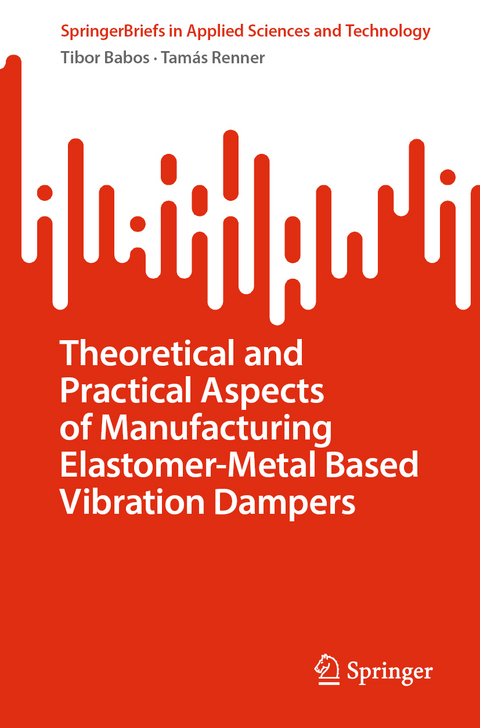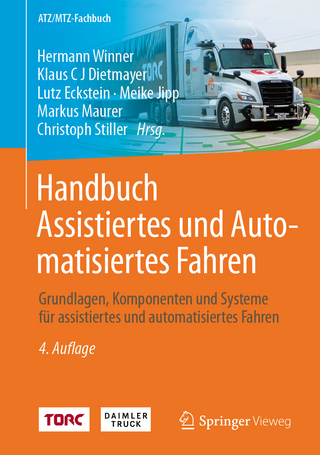
Theoretical and Practical Aspects of Manufacturing Elastomer-Metal Based Vibration Dampers
Springer International Publishing (Verlag)
978-3-031-54078-3 (ISBN)
This book offers a comprehensive breakdown of rubber industry procedures, serving as an invaluable resource for enhancing professional literacy. It covers measurable technological parameters, manufacturing processes, and metallurgy of the materials required for producing high-value rubber-metal machine components. These components find wide applications in the engineering industry, including buffers, vibration damping elements, pipe expansion joints, and silent blocks (vibration dampers vulcanized between steel pipes).
The manufacturing of modern machine components necessitates meeting high technical standards and ensuring flawless performance throughout their lifetime. This goal is accomplished by manufacturing components to the required technical parameters with consistent quality specified during the design stage.
Unfortunately, scientific descriptions of rubber-metal bonding technologies often lack the detail required for practical application. This book addresses this gap by presenting extensive research conducted by Renner Rubber Products, a key player in the rubber market in Central Europe, drawing on practical experience from the Centre for Security Studies at the Hungarian University of Agriculture and Life Sciences.
The book provides a set of technological specifications for rubber-metal bonding based on experiments, measurements, calculations, and proven research results.
A noteworthy aspect of the book is that it is the result of close scientific collaboration between academia and industry-leading players, resulting in a highly qualified product applicable in science, academia, and industrial production alike. It serves as a valuable tool for anyone in the engineering industry seeking to enhance their understanding of rubber industry procedures and produce high-quality rubber-metal machine components.
Dr. Tibor Babos served in the following positions:
Vice President, Hungarian Atlantic Council (2023-)
Chief Technology Advisor, Neumann Technology Platform (2023)
Ministerial Commissioner and Executive Agent for the U.S.-Hungarian Defense Cooperation Agreement (2020-2022) Chief Government Advisor on Security and Defense Policy, Prime Minister's Office (2011-2020) Founding Director, St. Stephen Security Research Center, Hungarian Agricultural and Life Sciences University (2017-) Honorary Professor, University of Óbuda (2014-) Co-chairman, Board Member, Transatlantic Policy Consortium-TPC (2015-) Founding Director, Security Science Center, University of Óbuda (2014-) Founding Director, Security Science College, University of Óbuda (2014-) Distinguished Private Professor, National University of Public Service (2014-) Project Manager, The First Hungarian Critical Infrastructure Protection Research Project (2011-2013) Acting Chief, Plans and Policy (J5), Hungarian Joint Defense Staff (2010-2011) Dean, NATO Military Committee Strategic Working Group (2008-2009) Strategic Representative, NATO Military Committee Strategic Working Group (2005-2008) Founder and Honorary President of the Postgraduates' International Network-pi-NET (1998-)Dr. Tamás Renner has the following educational qualification:
2009-2012 Ph.D., School of Engineering Sciences, Szent István University, Gödöllö
1997-2002 Product and Production Development, Faculty of Engineering, Szent István University, Gödöllö
1993-1997 Agricultural Vocational School, Jánoshalma
His professional experience includes:
2002-2018 Factory Manager of Renner Rubber Products2018 - present Director of Technology and Innovation at Renner Rubber Products:
- Professional control, production planning, design of rubber industry tools, development, and introduction of new technologies in the rubber industry.
- Attention to the adaptation and development of environmental production technologies.
- Development of patented technology: special blending of ground rubber waste into new products, targeting recycling, and waste-free production at Renner Rubber Products.
- Design of a Hungarian-made universal agricultural power machine. Two prototypes were ready by 2018 and the trial series of 8 units in 2019. I am now responsible for the factory development of this project to be able to export production outside Europe as well and to introduce the machines to the market.
Chapter 1: Introduction.- Chapter 2: Technical Basics.- Chapter 3: Elastomers.- Chapter 4: The Theory of Rubber Compounds and Polymer Production.- Chapter 5: The Theory of Vulcanisation.- Chapter 6: The Properties of Vulcanisates.- Chapter 7: Rubber Manufacturing Operations.- Chapter 8: Springs.- Chapter 9: Production of Rubber Springs.- Chapter 10: The Effect of Technological Parameters on the Tensile Strength of Rubber Springs (After Renner, Based on Experimental Design).- Chapter 11: Elemental Analysis of the Rubber-Metal Interface.- Chapter 12: Summary.
| Erscheinungsdatum | 02.04.2024 |
|---|---|
| Reihe/Serie | SpringerBriefs in Applied Sciences and Technology |
| Zusatzinfo | X, 152 p. 108 illus., 85 illus. in color. |
| Verlagsort | Cham |
| Sprache | englisch |
| Maße | 155 x 235 mm |
| Themenwelt | Technik ► Fahrzeugbau / Schiffbau |
| Technik ► Maschinenbau | |
| Schlagworte | Elastomer • Metal Armatures • natural rubber • Rubber-metal Bond • Rubber Products • Rubber Springs • Synthetic Rubber • Vibration • Vibration damping • Vulcanization |
| ISBN-10 | 3-031-54078-6 / 3031540786 |
| ISBN-13 | 978-3-031-54078-3 / 9783031540783 |
| Zustand | Neuware |
| Haben Sie eine Frage zum Produkt? |
aus dem Bereich


